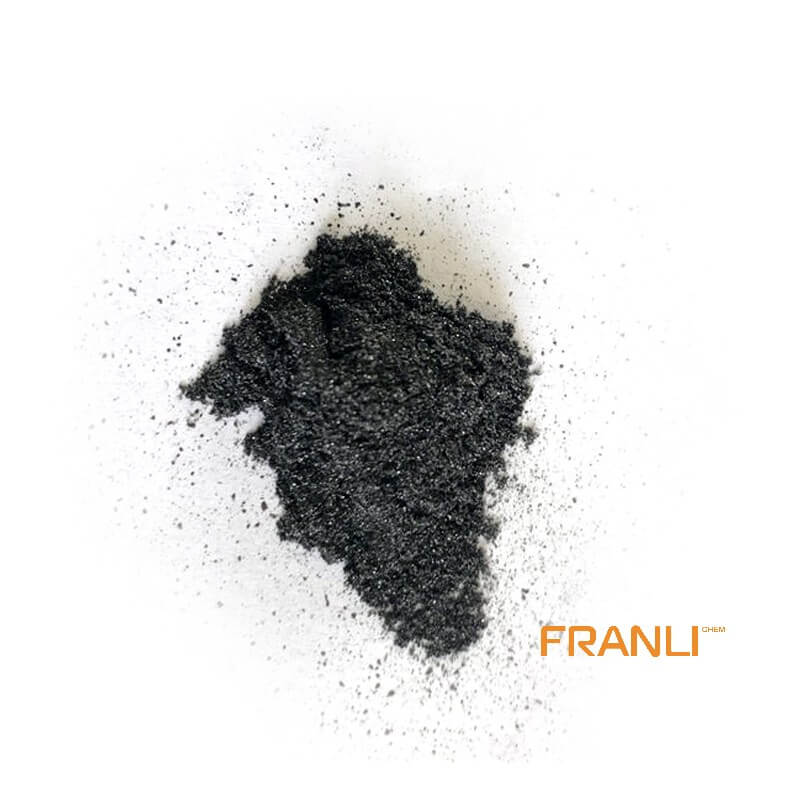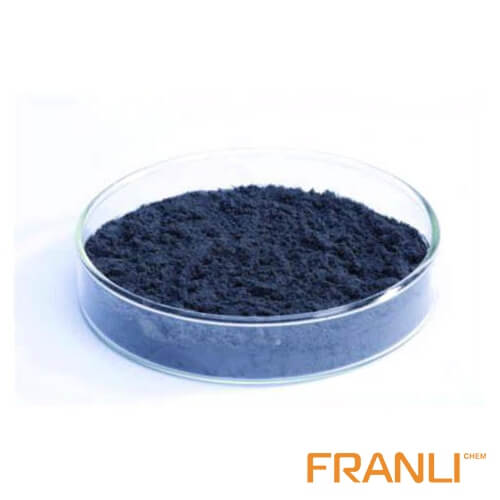


Expandable Graphite
Size
0.50mm or 0.106mm, etc
Package
25 kg small bags into ton bags
Origin
China
Features
Preservative/Electrical and thermal conductivity, etc.
Application
Fireproof sealing element, flame retardant, refractory brick, etc.
Expandable graphite crystal is a typical layered carbon material. Other heterogeneous particles such as atoms, molecules, ions, and even atomic clusters are inserted into the interlayer of crystalline graphite by physical or chemical methods to form a new layered compound, which is called graphite interlayer compound, namely expandable graphite.
Request a quoteExpandable graphite, also known as worm graphite, is a kind of crystalline compound that uses physical or chemical methods to insert non-carbon reactants into the nanocarbon material between the natural flake graphite layers and combines with the hexagonal network plane of carbon while maintaining the graphite layer structure. Not only does it keep graphite high-temperature resistance, corrosion resistance can withstand the neutron flux, x rays, and gamma irradiation for a long time, low friction coefficient, good self-lubrication, conductive thermal conductivity, and anisotropy, and other excellent physical and chemical properties, but due to the interaction of insert material and graphite layer presents the original graphite and intercalated materials do not have new performance, Overcome the shortcomings of natural graphite brittleness and impact resistance is very poor, expandable graphite. Working under high temperature, high pressure or radiation conditions, no decomposition, deformation or aging, stable chemical properties, is widely used in machinery, petroleum, chemical, metallurgy, navigation, aerospace, transportation, and other industrial fields, known as the world’s “king of sealing”.

At present, there are still some problems in the preparation of expandable graphite, such as small expansion volume, a large amount of oxidant, difficult washing, and poor worm effect. In this experiment, the effects of an oxidizing agent, intercalating agent, reaction temperature, and time on graphite expansion were investigated using high carbon graphite from large-scale graphite flotation concentrate in Ancuabe mine, Mozambique as raw material.
1. Preparation of expandable graphite
High purity graphite: High purity graphite with a fixed carbon content of 99.58% was prepared from the flotation concentrate of large-scale graphite ore from Ancuabe mine in Mozambique by screening and obtaining +180μm particle size products.
Expandable graphite: take 3g high carbon and large scale graphite, add a certain amount of K2Cr2O7/HClO4/H3PO4 oxidizing intercalator, stir evenly, put it in a water bath at a certain temperature, react for a period of time, wash to neutral, and dry to get expandable graphite.
2. The effect of oxidation intercalation agent on graphite expansion volume
Fixed test conditions: natural flake graphite 3G, potassium dichromate 0.3g, perchloric acid 15mL, phosphoric acid 5mL, drying temperature 60℃, reaction temperature 40℃, time 1h, expandable graphite
When the oxide intercalator is K2Cr2O7/HClO4/H3PO4, the graphite expands better. As an oxidant, K2Cr2O7 reacts with natural flake graphite and destroys van der Waals forces between graphite layers, providing space conditions for intercalation of intercalators. HClO4 not only provides an acidic environment but also acts as an oxidant and intercalator to promote the opening of graphite layers. H3PO4 acts as a large group intercalator and H2PO4-, HPO42- and PO43- generated by ionization fill the graphite oxide layers, helping to further expand the interlayer distance.
3. The effect of potassium dichromate dosage on graphite expansion volume
Fixed test conditions: natural flake graphite 3G, perchloric acid 15mL, phosphoric acid 5mL, drying temperature 60℃, reaction temperature 40℃, time 1h. The mass ratio of potassium dichromate to graphite was 0.07:1, 0.1:1, 0.13:1, 0.17:1 and 0.2:1.
When the mass ratio of potassium dichromate to graphite is 0.1, the maximum expansion volume is 320mL/g. The mass ratio of potassium dichromate to graphite is less than 0.1, the amount of oxidizer is insufficient, and the graphite molecular layer is not fully opened so that the intercalator group is less filled between the graphite layers. When the mass ratio of potassium dichromate to graphite is greater than 0.1, an excessive amount of oxidizer will lead to peroxidation of graphite and passivation of its carbon atom layer, which is not conducive to the entry of the intercalator.
4. Influence of perchloric acid dosage on graphite expansion volume
Fixed test conditions: natural flake graphite 3g, potassium dichromate 0.3g, phosphoric acid 5mL, drying temperature 60℃, reaction temperature 40℃, time 1h. The volumetric mass ratios (mL/g) of perchloric acid to graphite were 3:1, 3.67:1, 4.33:1, 5:1 and 5.67:1.
According to the figure above, when the volumetric mass ratio of perchloric acid to graphite is 3.67ml /g, the maximum expansion volume is 330mL/g. The volume/mass ratio of perchloric acid to graphite is less than 3.67mL/g, the amount of perchloric acid is less, the H+ supply is insufficient, it cannot provide a sufficiently acidic environment for an oxidizing agent, and the oxidation intercalation is not sufficient. When the volume-mass ratio of perchloric acid to graphite is greater than 3.67mL/g, the solution volume increases, and the concentration of oxidizer decreases, which is not conducive to the full reaction between graphite and oxidizer.

5. Influence of phosphoric acid dosage on graphite expansion volume
Fixed test conditions: natural flake graphite 3g, potassium dichromate 0.3g, perchloric acid 11mL, drying temperature 60℃, reaction temperature 40℃, time 1h. The mass ratio of phosphoric acid to graphite was 1:1, 1.33:1, 1.67:1, 2:1, and 2.33:1.
According to the figure above, when the volumetric mass ratio of phosphoric acid to graphite is 1.33ml /g, the maximum expansion volume is 330mL/g. The volume/mass ratio of phosphoric acid to graphite is less than 1.33mL/g, the amount of intercalator is insufficient, and the interlaminar groups of graphite are less filled. When the volume-mass ratio of phosphoric acid to graphite is greater than 1.33mL/g and the amount of intercalator is too much, the remaining phosphoric acid groups cannot enter the saturated graphite layer. However, excessive phosphoric acid will increase the solution volume and reduce the reaction concentration, which is not conducive to the intercalation reaction.
6. Influence of reaction temperature on graphite expansion volume
Fixed test conditions: natural flake graphite 3G, potassium dichromate 0.3g, perchloric acid 11mL, phosphoric acid 4mL, drying temperature 60℃, time 1h. The reaction temperatures were changed to 20℃, 30℃, 40℃, 50℃ and 60℃.
According to the figure above, when the reaction temperature is 30℃, the expansion volume reaches 340mL/g. Increasing the temperature will convert thermal energy into chemical energy and transfer it to the reaction system to promote the oxidation intercalation reaction. As the temperature continues to rise, the expansion volume will not increase significantly, and more energy consumption will be increased.
7. Effect of reaction time on graphite expansion volume
Fixed test conditions: natural flake graphite 3G, potassium dichromate 0.3g, perchloric acid 11mL, phosphoric acid 4mL, drying temperature 60℃, reaction temperature 30℃. The reaction time was changed to 30min, 40min, 50min, 60min, and 70min.
According to the figure above, when the reaction time is 40min, the maximum expansion volume is 340mL/g. With the increase of time, the reaction is gradually completed and the expansion volume increases slowly. The reaction was nearly complete when it reached 40min, indicating that the oxidation intercalation reaction was fast and lasted for a short time.
In summary, K2Cr2O7/HClO4/H3PO4 was used as the oxidizing intercalator, and the process conditions were determined as follows: m (graphite) /m (K2Cr2O7) /V (HClO4) /V (H3PO4) =1:0.1:3.67:1.33, reaction temperature 30℃, reaction time 40min.
8. Sem analysis of expanded graphite
The morphology of expandable graphite and expandable graphite was analyzed by scanning electron microscope.
As can be seen from the edge of expandable graphite, when filled with an oxidized intercalator, the carbon atom layer is opened, the expansion distance between graphite layers is enlarged, and the graphite scales are large, so the volume of worm graphite generated by the expansion will be larger.
After expansion decomposition, the generated expanded graphite has a large volume, good worm shape, obvious lamellar structure, clear chain structure, clean surface, and no other impurities attached.



